How To Net Delivery Jeoss.
The idea is being able to perform a network delivered installation. The install can be performed on a real PC or in a virtual environment (i.e. VMware). On this how-to the installation will be performed on a Headless and CD-less target completely controlled by a SSH ePuTTY terminal.
NOTE: Please read Jeoss install manual before reading this how-to
Software required:
Jeoss
Serva32 / Serva64 1.2 B3 or higher
ePuTTY32 / ePuTTY32
1- The hardware lay-out is very simple;
- Server PC running Serva32 offers the Jeoss Install ISO image + PXE Services
- Target PC net boots (PXE Client) and receives a net delivered Jeoss install
- The Install process is entirely and solely controlled by a remote SSH ePuTTY terminal
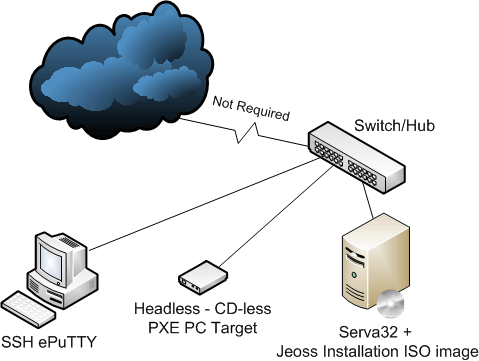
2- The Jeoss ISO install image can be downloaded and burned on a CD or just mounted using Daemon Tools. For the purposes of this How-to let's consider it is available as drive G: on the Serva server.
3-Let's configure Serva32. The IPs offered by the DHCP service belong to the network that link the Serva32 Server, the Target PC, and the SSH ePuTTY terminal. Router and DNS IPs are set to the IP of the Serva32 interface that connects to the Target and ePuTTY terminal.
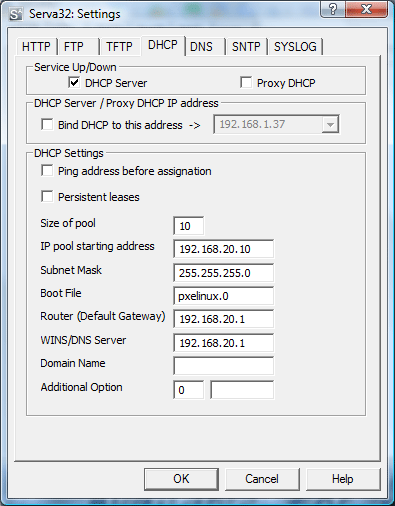
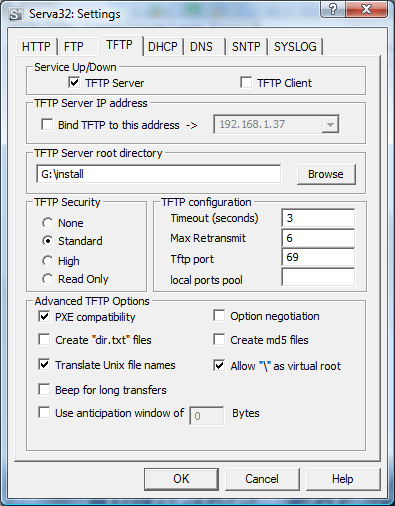
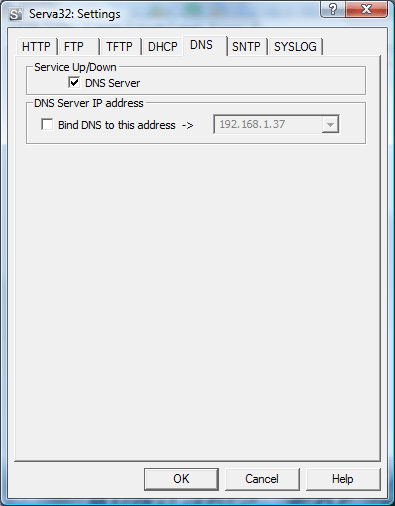
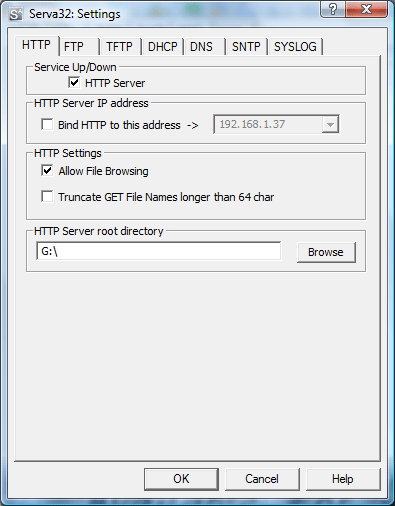
4- Let's boot the PXE enabled Target PC monitoring Serva's Log until we see when Serva assigns the Target's IP and the TFTP traffic begins. We will see something like:
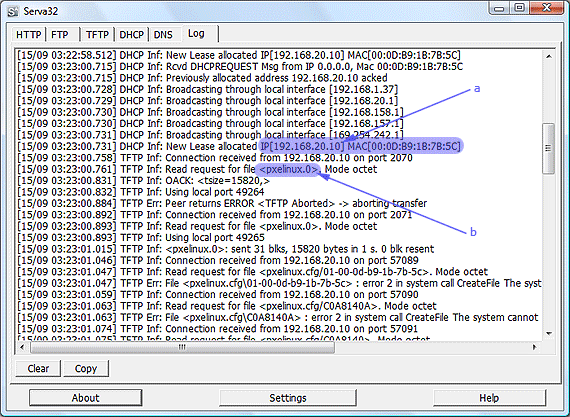
a) Shows the Target IP assignment; it gets 192.168.20.10. As our target is headless we are blindfolded; we will need this IP address to start our SSH ePuTTY session.
b) Shows how the target starts requiring the PXE booting components.
Now we have to just wait until the Jeoss install finishes booting-up and loading the default SSH control services. This can take about 3 minutes after we see the new target's IP on Serva's Log.
5- Lets start the SSH ePuTTY session pointing to the Target PC
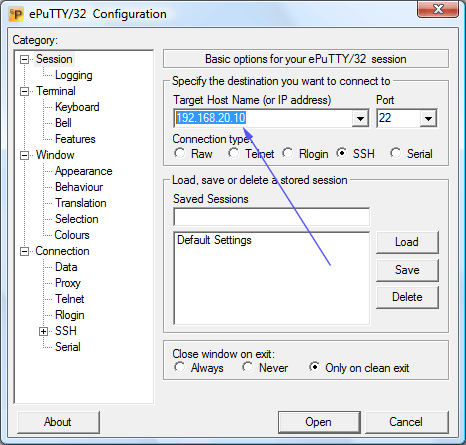
6- After accepting the new SSH certificate Jeoss Install will invite us to login:
login as: installer
installer@192.168.20.10's password: jeoss
7- And we finally get the first Jeoss Install screen inviting us to select the desired install mode. For the purposes of this how-to we select normal mode.
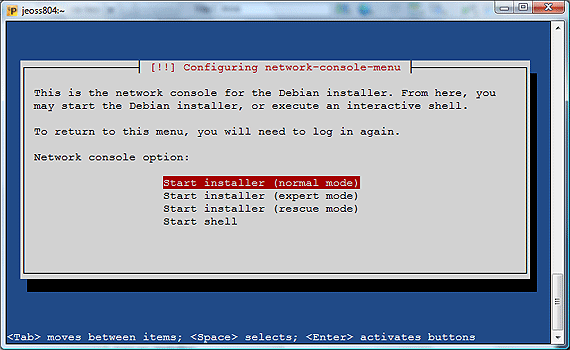
8- Now Jeoss install needs to know the name (requires Serva DNS services) or the IP of the HTTP server that offers the Jeoss install ISO image content. In our case Serva is also our HTTP server and its IP is 192.168.20.1. Providing an IP leads to faster installations.
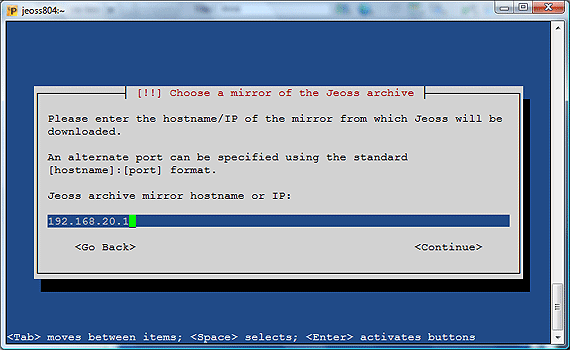
We will also be asked about the Directory in which the mirror of the Jeoss archive is located and the HTTP proxy if required; in our case taking defaults is correct.
Be patient; the install now will perform a lot of network transactions many of them requiring to know the availability of (in our case sometimes inexistent) external resources.
This network activity comes associated with timeouts that have to operate before continuing.
9- This screen tell us when Jeoss install commenced to retrieve components from Serva's HTTP server.
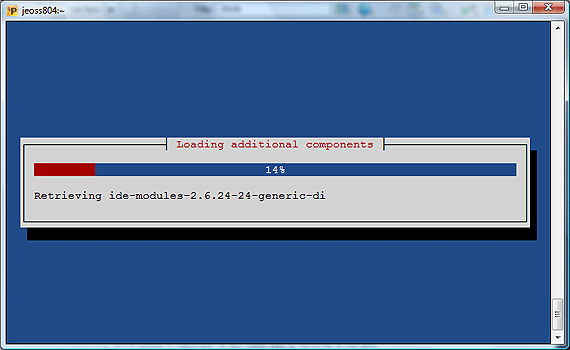
10- From this moment the Jeoos Install will behave as a regular CD-Delivery install but just retrieving its components from the Serva HTTP Server.
